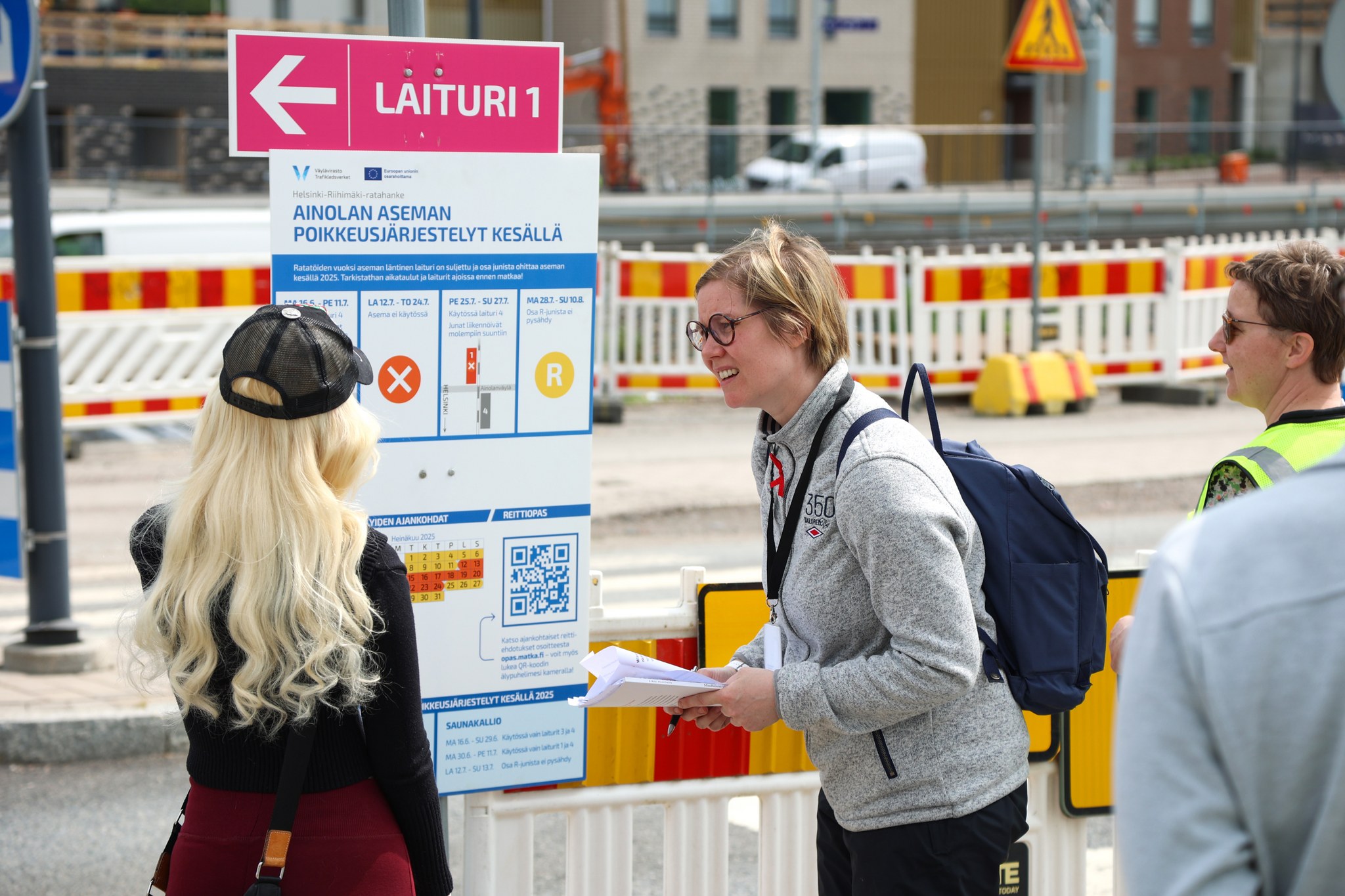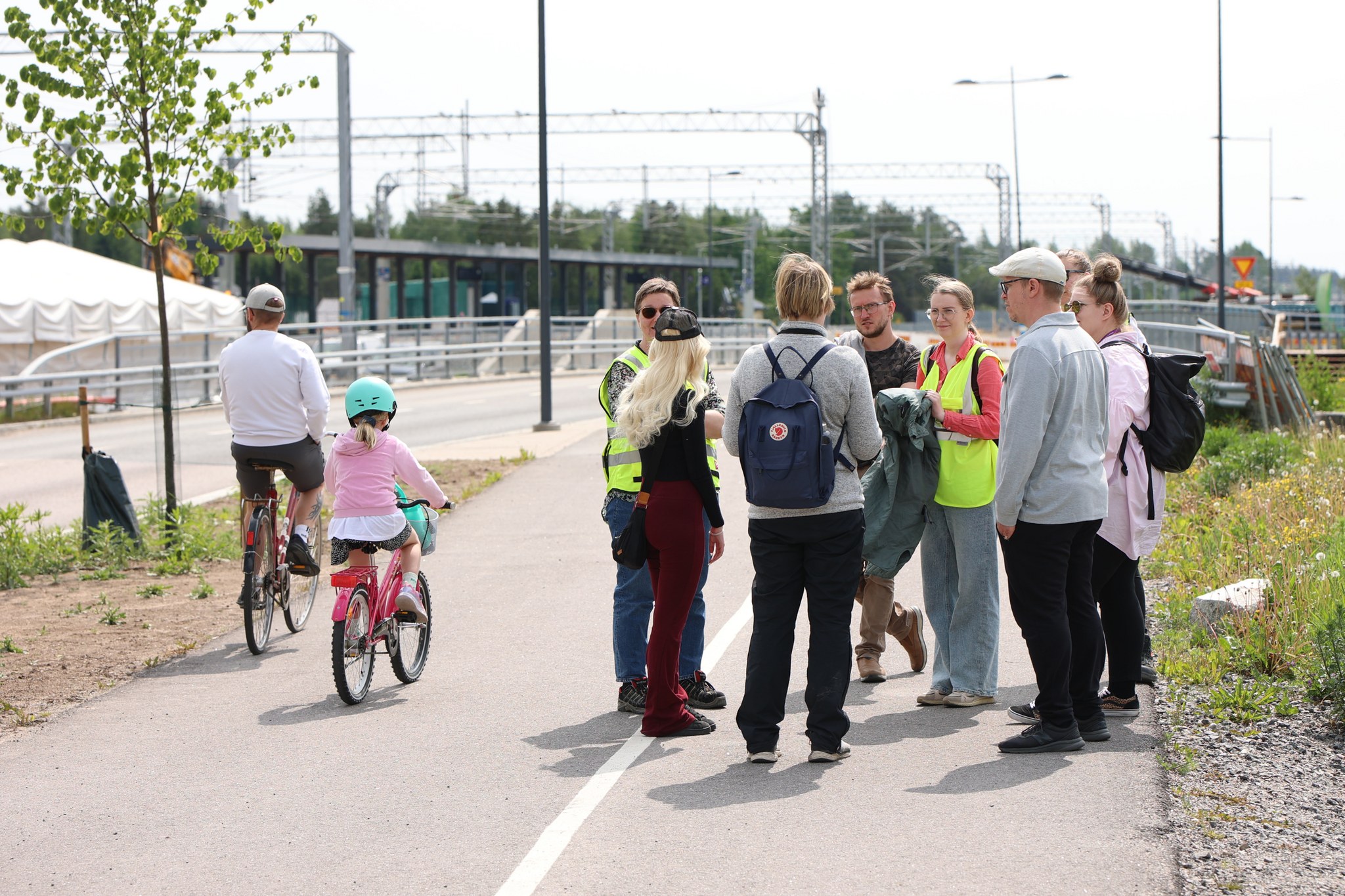Image: Citizen testing ensures that the routes function in an accessible, smooth and safe manner for all users. The image shows testers in the Helsinki-Riihimäki project.
The citizen testing operating model has been in use by the Finnish Transport Infrastructure Agency since 2021. Over four years, the operating model has been utilised in a total of 15 railway and road projects. Testing does not replace safety and quality audits carried out in construction projects, but provides valuable information on the safety and accessibility perceived by people.
As a result of the testing, on-site arrangements have been improved in many respects.
“Improvements in on-site arrangements can be small, but very important for users. It is challenging to modify the routes, for example in a dense rail station infrastructure, but safety can be enhanced by improving signs, the tidiness of the site and the placement of fences. At the same time, the solutions benefit us all, as moving around is safer for everyone when the environment under construction is clear, explains Minna Raatikka, citizens customer relationship specialist.
Highlighting user needs as early as possible
Discussions with citizens take place during the planning phase of the projects, for example at resident events. Recently, citizen testing has been utilised in planning. The idea is that people can talk about the needs that are important to them and their current experiences in the planning area at an early stage. This information deepens the understanding of experts and thus affects the end result of construction.
Hearing the users is particularly valuable in the planning phase:
“The earlier we start working together, the better opportunities we have to consider and reconcile various needs,” Raatikka emphasises.
“For example, during the planning phase of the Kokkola railway yard project, we asked the members of the local council for the disabled and the elderly to compare the location options of the connection to be built in the project. This way, we were able to include user opinions in further planning,” Raatikka adds.
It is important to identify what can and cannot be influenced during the testing phase in various citizen testings.
“Testing on-site arrangements during construction influences different things than testing during planning. Construction is bound to cause inconveniences, which we try to minimise through citizen testing, whether it is early planning or concrete solutions during the construction phase,” Raatikka sums up.

The Why question reveals real needs
So far, there have been more than forty citizen testers. Local residents and people with reduced mobility, such as wheelchair users and deaf-blind people, have been involved in the testing.
In addition, cyclists and schoolchildren have been asked to test routes during construction.
“It is important to understand why something is important or difficult for the user. Correspondingly, we can tell people about the boundary conditions related to construction and the construction site from the perspective of the projects. These encounters increase knowledge on both sides. It is valuable when someone looks at something familiar to you from the outside and with new eyes. One added value of citizen testing is that someone asks why something is like it is”, Raatikka summarises.

